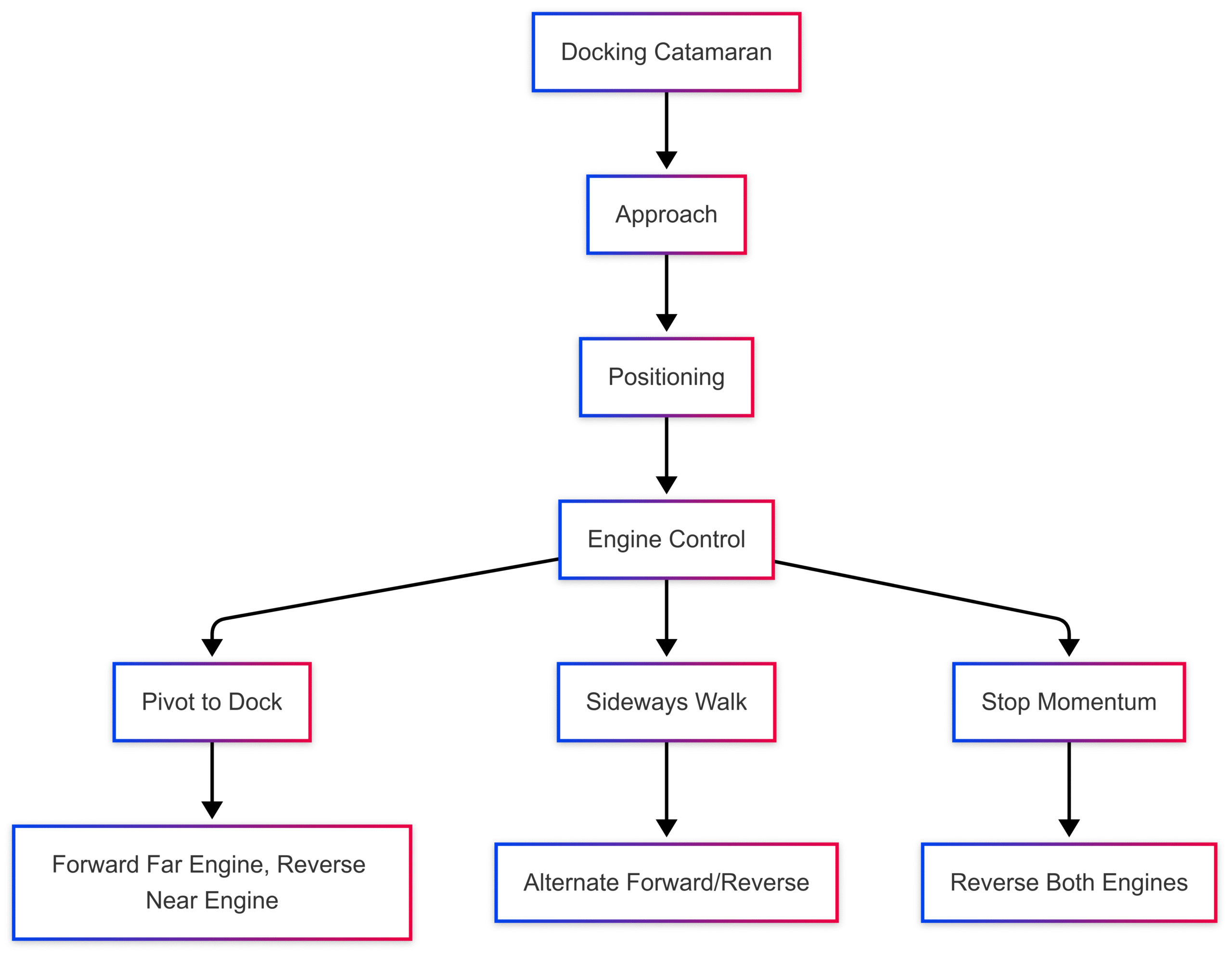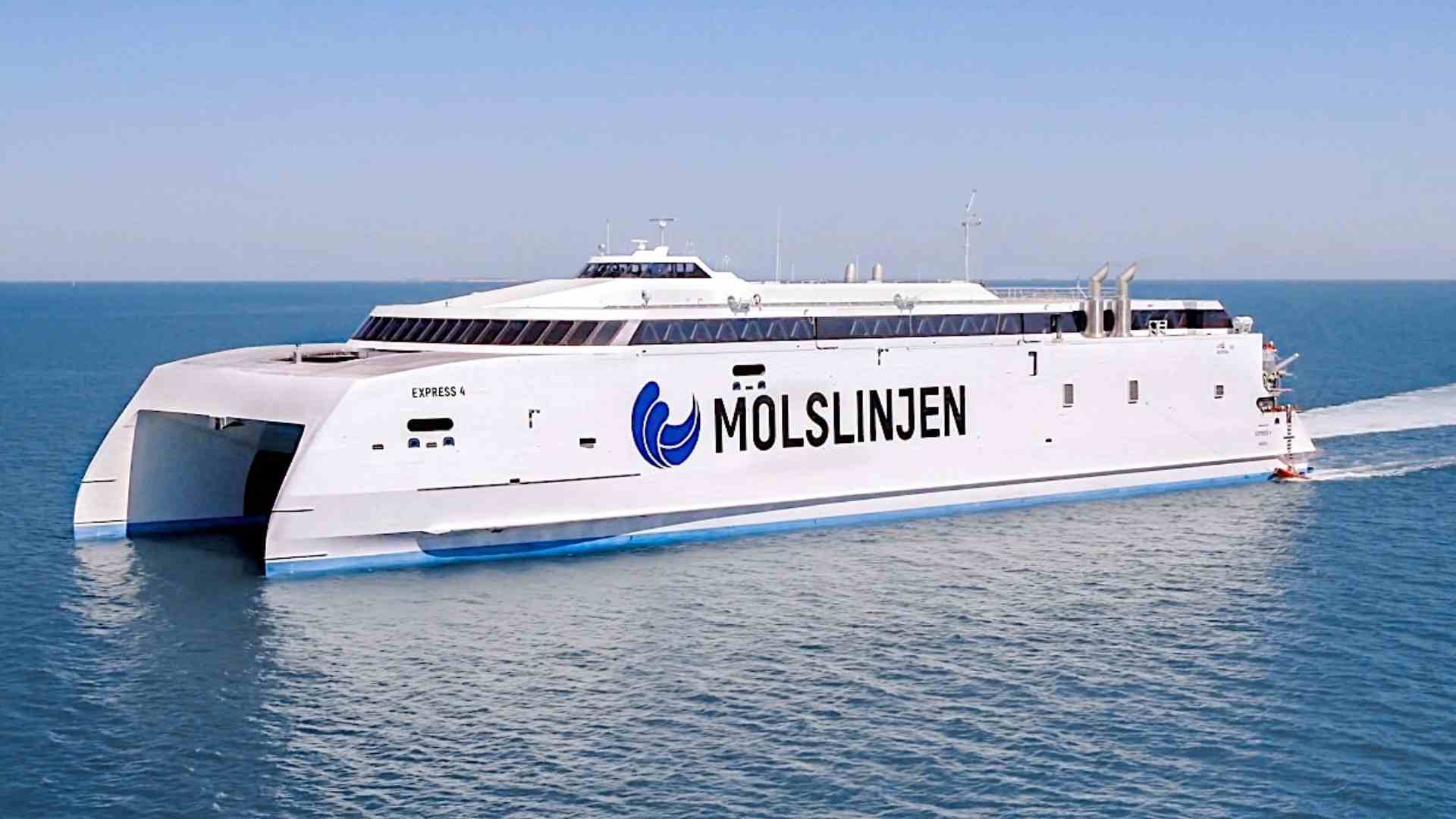Master the art of driving and docking a catamaran with this comprehensive guide. Learn expert techniques for handling twin engines, docking in tight spaces, and navigating crosswinds, complete with charts, tables, and step-by-step instructions for beginners and seasoned sailors.
Catamarans, with their dual-hull design, offer unmatched stability, speed, and spaciousness, making them a top choice for cruising, chartering, or living aboard. However, their unique structure—featuring twin hulls and often twin engines—presents distinct challenges when driving and docking. Whether you’re a novice boater or an experienced sailor transitioning to multihulls, mastering these skills is essential for safe and confident navigation. This comprehensive guide dives deep into the mechanics, techniques, and strategies for driving and docking a catamaran, with practical tips, expert insights, and visual aids to enhance your learning.
Understanding the Catamaran’s Design
Before stepping aboard, it’s critical to grasp the fundamental features that set catamarans apart from monohulls:
- Twin Hulls: The dual-hull configuration provides exceptional stability, reducing heeling and offering a smoother ride. However, the wide beam (often 20-30 feet) complicates tight maneuvers in marinas or crowded anchorages.
- Twin Engines: Most catamarans have two engines, one in each hull, spaced far apart. This setup allows for precise control, enabling the boat to pivot within its own length—a game-changer for docking.
- Shallow Draft: Catamarans typically have a shallower draft than monohulls, allowing access to shallower waters but requiring careful attention to underwater obstacles.
- High Windage: The large deck area and elevated structure increase susceptibility to wind, which can significantly affect low-speed handling.
These characteristics shape how you drive and dock a catamaran, requiring a blend of technical skill and situational awareness.
Driving a Catamaran: Step-by-Step Techniques
Driving a catamaran demands coordination, especially with twin engines. Below is a detailed breakdown of the process, from starting the engines to navigating open waters.
1. Familiarize Yourself with the Controls
Before setting off, take time to understand the catamaran’s control systems:
- Throttle Levers: Each engine has its own throttle, controlling speed and direction (forward or reverse). Some catamarans feature synchronized throttle controls for ease.
- Steering Wheel/Tiller: While the rudder(s) guide the boat at higher speeds, twin engines often take precedence for low-speed maneuvers.
- Engine Gauges: Monitor RPM, temperature, and fuel levels to ensure both engines are operating correctly.
- Joystick (Optional): Modern catamarans may include joystick controls, integrating engine and thruster inputs for intuitive handling.
Spend time at the helm to get comfortable with the layout, especially if transitioning from a single-engine vessel.
2. Starting the Engines
- Pre-Start Checks: Verify fuel levels, check for obstructions around propellers, and ensure batteries are charged.
- Neutral Position: Confirm both throttles are in neutral to prevent sudden movement.
- Ignition: Start both engines and let them warm up, listening for irregularities.
- Rudder Alignment: Center the rudders to simplify initial maneuvers.
3. Steering with Twin Engines
The hallmark of catamaran handling is using differential thrust—varying the power and direction of each engine. Here’s how it works:
- Forward Motion: Engage both engines in forward gear at equal throttle for straight-line travel. Adjust throttle to maintain desired speed.
- Turning: To turn left, increase forward power on the starboard engine while reducing or reversing the port engine. For a right turn, reverse the process. This pivots the boat around its center.
- Pivoting in Place: Apply forward power to one engine and reverse to the other (e.g., starboard forward, port reverse) to spin the boat within its own length.
Pro Tip: At low speeds, rudders are less effective, so rely on engine control for precision.
4. Handling in Reverse
Catamarans respond quickly in reverse due to their lightweight design and lack of a deep keel. To reverse:
- Shift both engines to reverse at low throttle.
- Use differential thrust to steer (e.g., more power to the starboard engine to move the stern to port).
- Apply short bursts of power to maintain control and avoid oversteering.
Practice reversing in open water to understand your catamaran’s response time and turning radius.
5. Navigating Open Waters
Once underway, catamarans are relatively straightforward to drive:
- Cruising Speed: Maintain a steady throttle for fuel efficiency, typically 70-80% of maximum RPM.
- Trimming: Adjust engine trim to optimize performance and reduce drag, especially in power catamarans.
- Wind and Waves: Account for windage and wave action, which can push the boat off course. Counteract drift with slight rudder or engine adjustments.
Chart: Catamaran Steering Dynamics

This chart illustrates how twin engines facilitate various maneuvers, emphasizing the versatility of differential thrust.
Docking a Catamaran: Mastering the Art
Docking is often the most daunting aspect of catamaran handling due to the wide beam and wind sensitivity. However, with proper technique, you can dock smoothly even in challenging conditions. Below are the essential steps, followed by advanced tips for tight spaces and crosswinds.
1. Plan Your Approach
Before approaching the dock:
- Survey the Area: Identify the dock’s layout, available space, and potential obstacles (e.g., other boats, pilings).
- Assess Conditions: Note wind direction, speed, and current. Winds above 10 knots or strong currents require adjusted strategies.
- Choose an Angle: Aim for a 30-45° approach angle for control, adjusting based on wind and current.
Table: Wind and Current Effects on Docking
| Condition | Effect on Catamaran | Strategy |
|---|---|---|
| Wind Toward Dock | Pushes boat toward dock | Shallow approach angle (10-20°), use reverse to slow momentum |
| Wind Away from Dock | Pushes boat away | Steeper approach angle (45°+), increase throttle slightly |
| Current Along Dock | Drifts boat sideways | Align boat parallel to current, use differential thrust |
| Crosswind | Pushes bow or stern | Counter with engine thrust, secure stern line first |
2. Prepare the Boat
- Fenders and Lines: Deploy fenders on the docking side, positioned to protect the hulls. Prepare bow and stern lines, with spring lines ready for tight berths.
- Crew Briefing: Assign roles (e.g., handling lines, monitoring clearance) and communicate the docking plan.
- Reduce Windage: Stow sails, lower Bimini tops, or secure loose gear to minimize wind resistance.
3. Position the Catamaran
- Approach Slowly: Never exceed a speed you’re comfortable hitting the dock at—typically 1-2 knots.
- Align the Boat: For a portside tie-up, position the boat slightly ahead of the docking spot. Use differential thrust to pivot into place.
- Counteract Drift: If wind or current pushes the boat, apply short bursts of power to maintain alignment.
4. Use Engines for Precision
Twin engines shine during docking:
- Pivoting: To nudge the stern toward the dock, apply forward power to the engine farthest from the dock and reverse to the closer engine.
- Sideways Movement: Alternate forward and reverse thrusts between engines to “walk” the boat sideways, ideal for parallel docking.
- Stopping Momentum: Apply reverse on both engines to halt forward motion, using minimal power to avoid overcorrecting.
Chart: Docking Maneuvers

This chart outlines the engine-based maneuvers critical for docking precision.
5. Secure the Boat
- Stern Line First: In crosswinds or tight berths, secure the stern line to stabilize the boat.
- Bow and Spring Lines: Attach bow lines and spring lines to prevent forward or backward drift.
- Adjust Tension: Ensure lines are snug but allow for tidal changes. Use fenders to protect against rubbing.
6. Handling Tight Spaces
In confined marinas or slips:
- Back and Fill: If space is limited, pivot the boat using differential thrust, then reverse out and realign.
- Use Thrusters (If Equipped): Bow or stern thrusters simplify sideways movement, reducing reliance on engine thrust.
- Abort and Retry: If the approach feels off, don’t force it. Circle back and try again.
7. Docking in a Crosswind
Crosswinds are a common challenge for catamarans due to their high windage. Follow these steps:
- Assess Wind Strength: Winds above 15 knots require aggressive engine control.
- Stern-to-Wind Approach: Position the stern into the wind to maintain control, approaching at a 90° angle to the berth.
- Counter Drift: Use the engine closest to the dock in reverse to pull the stern in, while the far engine pushes forward to keep the bow aligned.
- Secure Quickly: Prioritize the stern line to anchor the boat against wind-induced drift.
Pro Tip: Practice in calm conditions before attempting crosswind docking in a busy marina.
Advanced Docking Techniques
For seasoned catamaran operators, these advanced strategies enhance precision:
- Spring Line Docking: Use a spring line to pivot the boat into a tight slip. For example, attach a line from the bow to a dock cleat aft of the boat, then apply forward power with the wheel turned away from the dock to swing the stern in.
- Joystick Systems: High-end catamarans may feature joystick controls, integrating engines and thrusters. Push the joystick in the desired direction, and the system calculates the necessary thrust. Practice in open water to master sensitivity.
- Pod Drives: Some power catamarans use pod drives, which swivel independently for unparalleled control. Sync with a joystick for maneuvers like sideways docking or spinning in place.
Catamaran Specifications and Costs
To contextualize handling, consider typical catamaran specifications and costs, which influence maneuverability and accessibility.
Table: Popular Catamaran Models and Specs
| Model | Length (ft) | Beam (ft) | Draft (ft) | Engines | Price (USD, Approx.) |
|---|---|---|---|---|---|
| Lagoon 42 | 42 | 25.3 | 4.1 | 2 x 57 HP | $600,000 – $800,000 |
| Fountaine Pajot Isla 40 | 39.1 | 21.7 | 4.0 | 2 x 30 HP | $450,000 – $600,000 |
| Leopard 45 | 45 | 24.2 | 4.9 | 2 x 45 HP | $700,000 – $900,000 |
| Bali 4.8 | 48 | 25.9 | 4.5 | 2 x 57 HP | $800,000 – $1,100,000 |
- Length and Beam: Larger catamarans (45+ ft) require more space for docking but offer greater stability.
- Engine Power: Higher horsepower (50+ HP per engine) improves control in adverse conditions.
- Price: Costs vary based on size, brand, and features like joystick systems or luxury fittings.
Safety Considerations
Safety is paramount when driving or docking a catamaran:
- Life Jackets: Ensure all crew and passengers wear approved life jackets, even near the dock.
- Crew Coordination: Clearly communicate roles to avoid confusion or injury (e.g., fingers caught in lines).
- Avoid Limbs Overboard: Keep hands and feet inboard to prevent pinching against the dock.
- Secure Gear: Stow loose equipment to avoid tripping or interference during maneuvers.
- Check Weather: Avoid docking in small craft advisories or winds exceeding 20 knots unless experienced.
Practice Makes Perfect
Mastering catamaran handling requires regular practice. Start in open water to experiment with twin-engine maneuvers, then progress to docking in calm conditions. Use empty docks or quiet marinas for practice, gradually introducing variables like wind or current. Over time, you’ll develop an intuitive feel for your catamaran’s response, making even tight berths manageable.
Pro Tip: Enlist a dockhand or crew member to assist with lines, especially in busy marinas. It’s better to accept help than risk a collision.
Conclusion
Driving and docking a catamaran may seem intimidating, but with the right techniques, it becomes a rewarding skill. By leveraging the twin-engine advantage, planning your approach, and practicing regularly, you can navigate any marina with confidence. Whether cruising open waters or docking in a crosswind, this guide equips you with the knowledge to handle your catamaran like a pro. Get out on the water, practice these steps, and enjoy the freedom and stability that only a catamaran can offer.
Happy Boating!
Share How to Drive and Dock a Catamaran: A Complete Guide with your friends and leave a comment below with your thoughts.
Read How to Choose a Life Raft for Your Boat: The Complete Guide until we meet in the next article.
